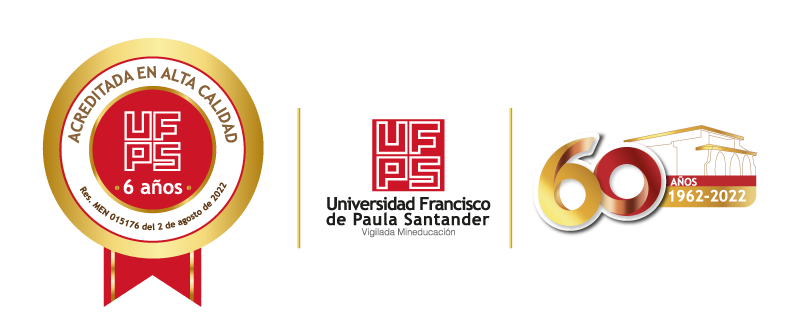Mostrar el registro sencillo del ítem
Design of a model for improving emergency room performance using a colored Petri net
| dc.contributor.author | Caicedo-Rolón, Alvaro Jr | |
| dc.contributor.author | Guerrero Gomez, Gustavo | |
| dc.contributor.author | Moreno Gamboa, Faustino | |
| dc.date.accessioned | 2025-03-06T14:27:25Z | |
| dc.date.available | 2025-03-06T14:27:25Z | |
| dc.date.issued | 2024-01-31 | |
| dc.identifier.uri | https://repositorio.ufps.edu.co/handle/ufps/9177 | |
| dc.description.abstract | Emergency rooms are one of the most complex and vital areas of healthcare institutions, which have presented overcrowding, long waiting, and length of stay times, affecting the timeliness, responsiveness, and quality of service. This research aimed to design a detailed patient flow model to improve emergency room performance using the hierarchical timed colored Petri nets. Then, the model was simulated to evaluate scenarios considering tactical decisions such as physician staff planning, operational decisions such as adjusting work schedules, and strategic decisions such as increasing observation beds. The best scenario would reduce the average waiting times for triage II patients by 17.30 % and 47.57 %, and triage III by 33.49 % and 43.49 % for medical consultation in the office or the minor surgery room, respectively. In addition, the waiting time in observation and the rate of patients left without being seen by a physician would be reduced by 92.45 % and 74.67 %, respectively. These results improve the quality and timeliness of the service and avoid putting the patient's health and life at risk. The designed model included more attributes for patients concerning the place of medical care in the emergency room, the number of visits to the physician, and the physician who will care for the patient. Moreover, the simulation model includes observation beds as a limited resource blocking new patient admission. Finally, this model is a tool to support emergency room managers in making short, medium, and long-term decisions to address problems such as overcrowding, long waiting and length of stay times, and high rates of patients left without being seen by a physician | eng |
| dc.format.extent | 13 Páginas | spa |
| dc.format.mimetype | application/pdf | spa |
| dc.language.iso | eng | spa |
| dc.publisher | Eureka physics and engineering | spa |
| dc.rights | This work is licensed under a Creative Commons Attribution 4.0 International License. | eng |
| dc.rights.uri | https://creativecommons.org/licenses/by-nc/4.0/ | spa |
| dc.source | https://journal.eu-jr.eu/engineering/article/view/2979 | spa |
| dc.title | Design of a model for improving emergency room performance using a colored Petri net | eng |
| dc.type | Artículo de revista | spa |
| dcterms.references | Derni, O., Boufera, F., Khelfi, M. F. (2019). Coloured Petri net for modelling and improving emergency department based on the simulation model. International Journal of Simulation and Process Modelling, 14 (1), 72. https://doi.org/10.1504/ijspm.2019.097717 | spa |
| dcterms.references | Salimifard, K., Hosseini, S., Moradi, M. (2013). Improving Emergency Department Processes Using Coloured Petri Nets. Joint Proceedings of the International Workshop on Petri Nets and Software Engineering (PNSE'13) and the International Workshop on Modeling and Business Environments (ModBE'13) co-located with the 34th International Conference on Application and Theory of Petri Nets and Concurrency Petri Nets 2013. Vol. 989. Milano, 335–349. Available at: https://ceur-ws.org/Vol-989/paper02b.pdf | spa |
| dcterms.references | Caicedo, A., Rivera, L. (2021). Caracterización de los servicios de urgencias de una ciudad fronteriza colombiana. Emergencia, 33, 239–241. Available at: https://revistaemergencias.org/wp-content/uploads/2023/08/Emergencias-2021_33_3_239-241.pdf | spa |
| dcterms.references | Aboueljinane, L., Frichi, Y. (2022). A simulation optimization approach to investigate resource planning and coordination mechanisms in emergency systems. Simulation Modelling Practice and Theory, 119, 102586. https://doi.org/10.1016/j.simpat.2022.102586 | spa |
| dcterms.references | MSPS, M. de S. y P. S. (2019). Observatorio nacional de Calidad en Salud, Indicadores de calidad resolución 0256/16. | spa |
| dcterms.references | Ashour, O. M., Okudan Kremer, G. E. (2014). Dynamic patient grouping and prioritization: a new approach to emergency department flow improvement. Health Care Management Science, 19 (2), 192–205. https://doi.org/10.1007/s10729-014-9311-1 | spa |
| dcterms.references | Ajami, S., Ketabi, S., Yarmohammadian, M., Bagherian, H. (2012). Wait Time in Emergency Department (ED) Processes. Medical Archives, 66 (1), 53. https://doi.org/10.5455/medarh.2012.66.53-57 | spa |
| dcterms.references | Luscombe, R., Kozan, E. (2016). Dynamic resource allocation to improve emergency department efficiency in real time. European Journal of Operational Research, 255 (2), 593–603. https://doi.org/10.1016/j.ejor.2016.05.039 | spa |
| dcterms.references | Ibrahim, I. M., Liong, C.-Y., Bakar, S. A., Ahmad, N., Najmuddin, A. F. (2017). Minimizing patient waiting time in emergency department of public hospital using simulation optimization approach. AIP Conference Proceedings. https://doi.org/10.1063/1.4980949 | spa |
| dcterms.references | M. de S. y P. S. MSPS (2015). Resolución 5596 del 2015. Por la cual se definen los criterios técnicos para el Sistema de Selección y Clasificación de pacientes en los servicios de urgencias ‘Triage’. | spa |
| dcterms.references | Kuo, Y.-H., Rado, O., Lupia, B., Leung, J. M. Y., Graham, C. A. (2014). Improving the efficiency of a hospital emergency department: a simulation study with indirectly imputed service-time distributions. Flexible Services and Manufacturing Journal, 28 (1-2), 120–147. https://doi.org/10.1007/s10696-014-9198-7 | spa |
| dcterms.references | Diefenbach, M., Kozan, E. (2011). Effects of bed configurations at a hospital emergency department. Journal of Simulation, 5 (1), 44–57. https://doi.org/10.1057/jos.2010.1 | spa |
| dcterms.references | Sinreich, D., Jabali, O., Dellaert, N. P. (2012). Reducing emergency department waiting times by adjusting work shifts considering patient visits to multiple care providers. IIE Transactions, 44 (3), 163–180. https://doi.org/10.1080/0740817x.2011.609875 | spa |
| dcterms.references | Ershadi, M. M., Shafaeizadeh, A. (2021). Simulation-based improvement and modification for performances of hospitals: a case study. International Journal of Simulation and Process Modelling, 16 (2), 90. https://doi.org/10.1504/ijspm.2021.115857 | spa |
| dcterms.references | Doudareva, E., Carter, M. (2021). Using Discrete Event Simulation to Improve Performance At Two Canadian Emergency Departments. 2021 Winter Simulation Conference (WSC). https://doi.org/10.1109/wsc52266.2021.9715411 | spa |
| dcterms.references | Bedoya-Valencia, L., Kirac, E. (2016). Evaluating alternative resource allocation in an emergency department using discrete event simulation. SIMULATION, 92 (12), 1041–1051. https://doi.org/10.1177/0037549716673150 | spa |
| dcterms.references | Zhao, Y., Peng, Q., Strome, T., Weldon, E., Zhang, M., Chochinov, A. (2015). Bottleneck detection for improvement of Emergency Department efficiency. Business Process Management Journal, 21 (3), 564–585. https://doi.org/10.1108/bpmj-06-2014-0060 | spa |
| dcterms.references | Cocke, S., Guinn, D., MacBlane, E., Walshak, S., Willenbrock, N., White, K. P. et al. (2016). UVA emergency department patient flow simulation and analysis. 2016 IEEE Systems and Information Engineering Design Symposium (SIEDS). https://doi.org/10.1109/sieds.2016.7489282 | spa |
| dcterms.references | Daldoul, D., Nouaouri, I., Bouchriha, H., Allaoui, H. (2015). Optimization on human and material resources in Emergency Department. 2015 International Conference on Industrial Engineering and Systems Management (IESM). https://doi.org/10.1109/iesm.2015.7380224 | spa |
| dcterms.references | Hoot, N. R., LeBlanc, L. J., Jones, I., Levin, S. R., Zhou, C., Gadd, C. S., Aronsky, D. (2008). Forecasting Emergency Department Crowding: A Discrete Event Simulation. Annals of Emergency Medicine, 52 (2), 116–125. https://doi.org/10.1016/j.annemergmed.2007.12.011 | spa |
| dcterms.references | Lee, S. (2014). The role of hospital selection in ambulance logistics. IIE Transactions on Healthcare Systems Engineering, 4 (2), 105–117. https://doi.org/10.1080/19488300.2014.914608 | spa |
| dcterms.references | Castanheira-Pinto, A., Gonçalves, B., Lima, R. M., Dinis-Carvalho, J. (2021). Data Modelling and Validation of An Emergency Department Simulation Model—A Lean Healthcare Approach. Industrial Engineering and Operations Management, 1–11. https://doi.org/10.1007/978-3-030-78570-3_1 | spa |
| dcterms.references | Hosseini, S. M., Mohammadi, K., Yaghoubi, M. (2022). Optimization of Service Process in Emergency Department Using Discrete Event Simulation and Machine Learning Algorithm. Arch. Acad. Emerg. Med., 10 (1), e44. | spa |
| dcterms.references | Guasch Petit, A., Piera Eroles, M. A., Casanovas Garcia, J., Figueras Jové, J. (2003). Modelado y simulación : aplicación a procesos logísticos de fabricación y servicios. https://doi.org/10.5821/ebook-9788498802351 | spa |
| dcterms.references | Banks, J., Carson, J. (1984). Discrete-event system simulation. New Yersey: Prentice Hall, INC. | spa |
| dcterms.references | van der Aalst, W. M. P., Stahl, C. (2011). Modeling Business Processes. The MIT Press. https://doi.org/10.7551/mitpress/8811.001.0001 | spa |
| dcterms.references | Barad, M. (2003). Tutorial and Survey Articles: An introduction to Petri Nets. International Journal of General Systems, 32 (6), 565–582. https://doi.org/10.1080/03081070310001623366 | spa |
| dcterms.references | Jensen, K., Kristensen, L. M. (2009). Coloured Petri Nets. Springer Berlin Heidelberg. https://doi.org/10.1007/b95112 | spa |
| dcterms.references | Ceballos-Acevedo, T. M., Velásquez-Restrepo, P. A., Jaén-Posada, J. S. (2014). Duración de la estancia hospitalaria. Metodologías para su intervención. Gerencia y Políticas de Salud, 13 (27). https://doi.org/10.11144/javeriana.rgyps13-27.dehm | spa |
| dc.identifier.doi | 10.21303/2461-4262.2024.002979 | |
| dc.publisher.place | Harju maakond, Estonia | spa |
| dc.relation.citationedition | Vol. No.1 (2024) | spa |
| dc.relation.citationendpage | 166 | spa |
| dc.relation.citationissue | 1 (2024) | spa |
| dc.relation.citationstartpage | 154 | spa |
| dc.relation.cites | Caicedo-Rolon, A. J., Guerrero-Gomez, G., & Moreno-Gamboa, F. (2024). Design of a model for improving emergency room performance using a colored Petri net. EUREKA: Physics and Engineering, (1), 154-166. https://doi.org/10.21303/2461-4262.2024.002979 | |
| dc.rights.accessrights | info:eu-repo/semantics/openAccess | spa |
| dc.rights.creativecommons | Atribución 4.0 Internacional (CC BY 4.0) | spa |
| dc.subject.proposal | Healthcare | eng |
| dc.subject.proposal | Simulation | eng |
| dc.subject.proposal | Decision-making | eng |
| dc.subject.proposal | Management | eng |
| dc.subject.proposal | Hospital | eng |
| dc.subject.proposal | Logistics | eng |
| dc.subject.proposal | Emergency | eng |
| dc.subject.proposal | Overcrowding | eng |
| dc.subject.proposal | Modeling | eng |
| dc.subject.proposal | timeliness | eng |
| dc.type.coar | http://purl.org/coar/resource_type/c_6501 | spa |
| dc.type.content | Text | spa |
| dc.type.driver | info:eu-repo/semantics/article | spa |
| dc.type.redcol | http://purl.org/redcol/resource_type/ART | spa |
| oaire.accessrights | http://purl.org/coar/access_right/c_abf2 | spa |
| oaire.version | http://purl.org/coar/version/c_970fb48d4fbd8a85 | spa |
| dc.type.version | info:eu-repo/semantics/publishedVersion | spa |











